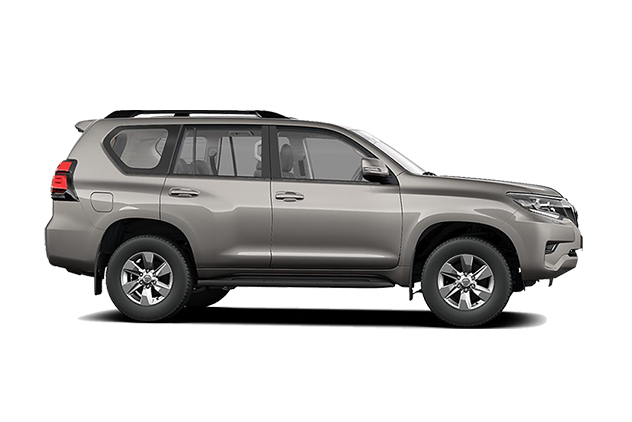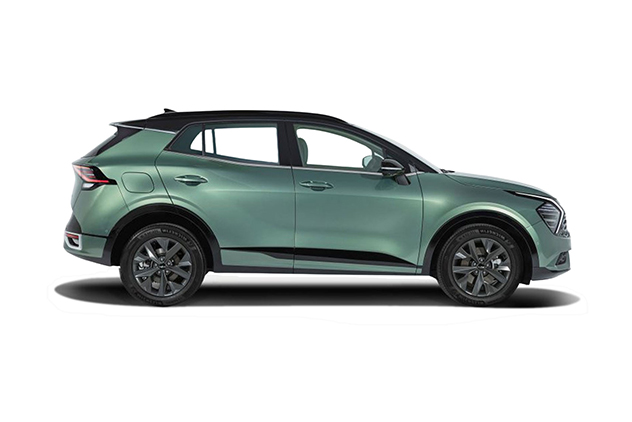Icelandic Sheepdog, a breed deeply entwined with Iceland’s rich history and culture. While strict border controls make it difficult for tourists to bring their own dogs to Iceland, learning about this unique breed can enrich your travel experience.
As you explore Iceland’s stunning landscapes, imagine the loyal Icelandic Sheepdog by your side, guiding sheep and serving as a faithful companion to Icelanders for centuries. Let’s dive into the fascinating history and characteristics of this beloved breed and see how it connects to the beautiful country of Iceland.
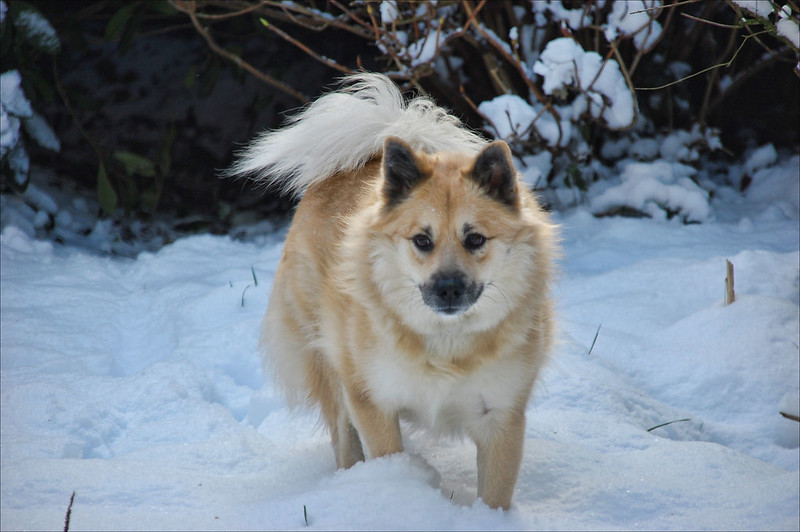
CC BY-NC 2.0 Flickr user/eqkrishena
The Icelandic Sheepdog: A National Treasure
History and Origin of the Icelandic Sheepdog
The Icelandic Sheepdog, or Íslenskur Fjárhundur, arrived in Iceland with Norwegian settlers around 874 AD. These dogs, ancestors of the spitz-type breeds, adapted quickly to the harsh Icelandic climate and the demanding tasks of herding sheep and other livestock. By the 19th century, the breed faced near extinction due to disease and adverse conditions. However, dedicated breeders revived the Icelandic Sheepdog, ensuring its survival and cementing its status as a national symbol.
Characteristics of the Icelandic Sheepdog
Physical Attributes
Icelandic Sheepdogs are medium-sized dogs, typically weighing between 20-30 pounds and standing 16.5-18 inches tall. They are known for their double-coated fur, which can be short or long-haired and comes in various colors, including tan, reddish-brown, grey, and black with white markings. Their spitz-type features include pricked ears and a bushy tail that curls over the back.
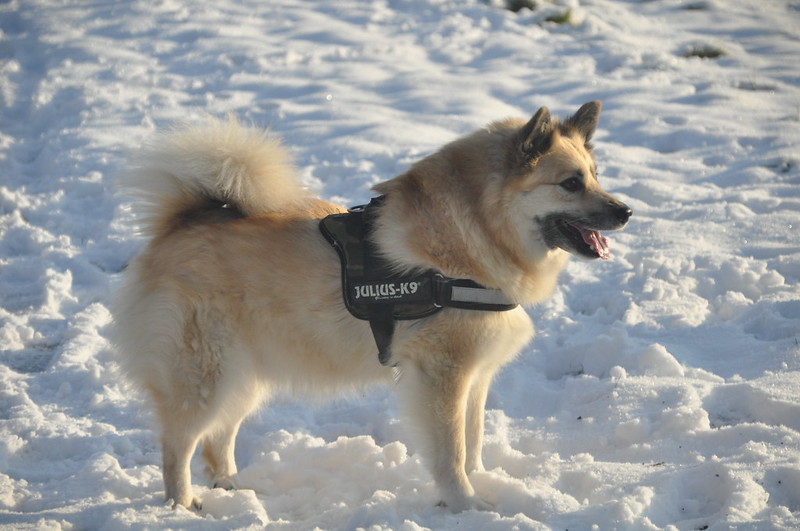
CC BY-NC 2.0 Flickr user/eqkrishena
Temperament and Behavior
These dogs are renowned for their friendly and energetic nature. They are intelligent, playful, and eager to please, making them great companions. Icelandic Sheepdogs thrive on human interaction and are known for their loyalty and protective instincts, especially towards children and other pets.
Why the Icelandic Sheepdog is a Cultural Icon
The Icelandic Sheepdog holds a significant place in Iceland’s cultural and historical tapestry. This breed is more than just a pet; it’s a symbol of Icelandic resilience and tradition, reflecting the nation’s connection to its harsh and beautiful landscape.
Historical Significance
The Icelandic Sheepdog’s origins trace back to the Viking settlers who arrived in Iceland around 874 AD. These dogs were essential for herding Icelandic sheep and other livestock, crucial tasks in the challenging Icelandic weather environment. Over centuries, the breed adapted to the harsh terrain and weather, embodying the same endurance and tenacity that characterize the Icelandic people.
Cultural Heritage
Throughout history, the Icelandic Sheepdog has been a faithful companion to Icelandic farmers. Its role in herding and protecting livestock from predators like eagles made it indispensable in rural Iceland. The breed’s ability to work independently while maintaining a strong bond with its human companions highlights its importance in daily Icelandic life. During the annual “rettir,” the traditional sheep roundup, these dogs are still celebrated for their herding skills, showcasing their enduring legacy in Icelandic culture.
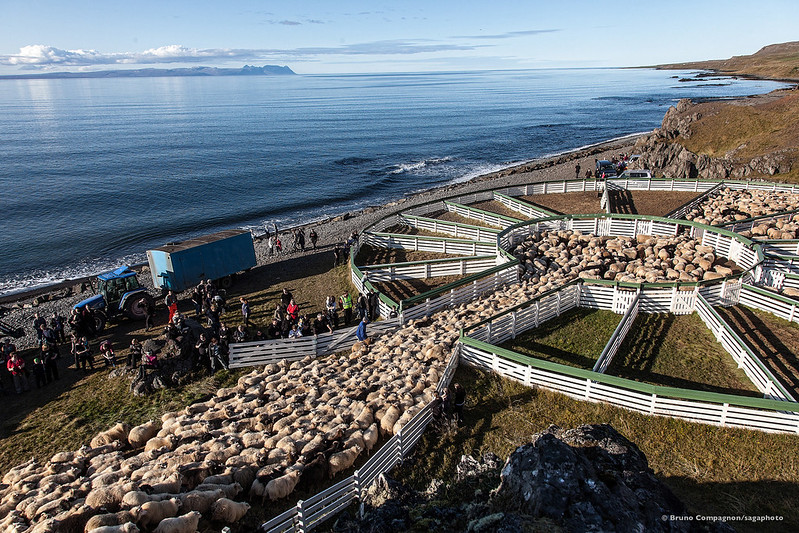
Photo from Flickr user/compagnonbruno
Modern Symbolism
Today, the Icelandic Sheepdog continues to be a cherished part of Iceland’s heritage. It is recognized as a national symbol, embodying the country’s pastoral traditions and rural way of life. This breed’s story of near extinction in the late 19th century and subsequent revival by dedicated breeders adds to its cultural significance. The efforts to preserve the Icelandic Sheepdog reflect the broader Icelandic commitment to maintaining cultural and historical continuity (Animal Corner, Woofmastery).
Unique Traits and Adaptability
The Icelandic Sheepdog’s physical and behavioral traits also contribute to its cultural status. Known for their friendly and energetic nature, these dogs are not only excellent herders but also beloved family pets. Their thick, double coats protect them from Iceland’s cold climate, while their high intelligence and playful disposition make them a joy to have around. These characteristics are celebrated in Icelandic literature and folklore, further cementing their place in the nation’s cultural identity

CC BY-NC 2.0 Flickr user/Málfríður Guðmundsdóttir
Exploring Iceland with a Cultural Perspective
While traveling through Iceland, you can immerse yourself in the culture by visiting farms and rural areas where the Icelandic Sheepdog is still actively working. Engaging with local farmers and hearing stories about these loyal dogs will give you a deeper understanding of Icelandic life.
Renting a Car for Your Journey
To fully experience Iceland’s diverse landscapes and cultural sites, renting a car is the best option. Hertz Iceland offers convenient and flexible car rental services, allowing you to explore everything from the Golden Circle to the remote highlands at your own pace. This flexibility will enable you to visit rural areas where you might see Icelandic Sheepdogs in action.
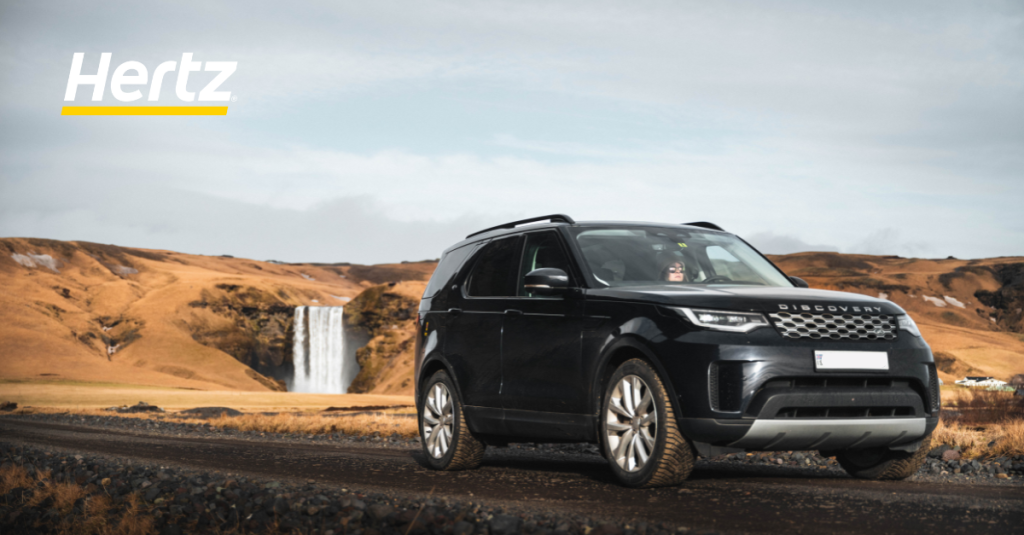
Tips for Enjoying Your Trip
Traveling through Iceland is an unforgettable experience, and planning ahead can help you make the most of your journey. Here are some detailed tips to ensure a smooth and enjoyable trip, with a special focus on exploring Iceland with a Hertz Iceland rental car.
Planning Your Itinerary
When planning your itinerary, include both popular and off-the-beaten-path destinations:
- Golden Circle: This famous route includes Þingvellir National Park, Geysir geothermal area, and Gullfoss waterfall. These sites offer a glimpse into Iceland’s natural beauty and geological wonders.
- South Coast: Explore stunning waterfalls like Seljalandsfoss and Skógafoss, and visit the black sand beaches of Reynisfjara.
- Westfjords: For a more remote adventure, the Westfjords offer dramatic landscapes, fjords, and less-traveled roads.
- Snæfellsnes Peninsula: Known as “Iceland in Miniature,” this region features diverse landscapes, including glaciers, lava fields, and charming fishing villages.
Seasonal Considerations
Consider the time of year when planning your trip:
- Summer (June to August): Enjoy long days with nearly 24 hours of daylight, making it ideal for exploring and hiking. Summer is also the best time for accessing highland areas.
- Winter (November to March): Experience the magic of the Northern Lights and the beauty of snowy landscapes. Be prepared for shorter days and potentially challenging driving conditions.
Embracing the Outdoor Lifestyle
Iceland is perfect for outdoor enthusiasts. Here are some activities to consider:
- Hiking: Trails range from easy walks to challenging hikes. Popular hikes include the Laugavegur Trail and Glymur waterfall.
- Geothermal Baths: Relax in natural hot springs like the Blue Lagoon, Mývatn Nature Baths, and the Secret Lagoon.
- Wildlife Watching: Take whale watching tours or visit bird cliffs, especially in summer when puffins are nesting.
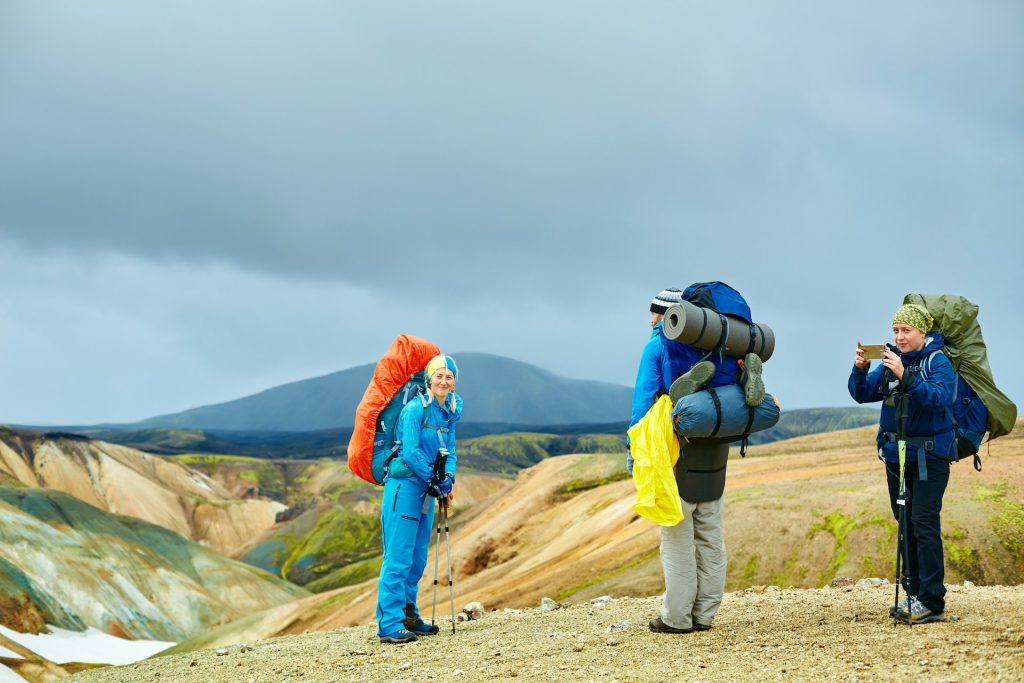
Safety Precautions
Safety is paramount when exploring Iceland’s rugged terrain:
- Weather Conditions: Always check the weather forecast and road conditions. Websites like the Icelandic Meteorological Office and the Icelandic Road and Coastal Administration provide up-to-date information.
- Dress Appropriately: Layered clothing, waterproof gear, and sturdy hiking boots are essential for changing weather conditions.
- Emergency Kit: Carry a basic emergency kit including a first aid kit, extra food and water, a flashlight, and a map.
Renting a Car with Hertz Iceland
Renting a car provides flexibility and convenience, allowing you to explore Iceland at your own pace. With Hertz Iceland, you can choose from a wide range of vehicles suited to different terrains and travel needs.
- 4×4 Vehicles: Ideal for exploring Iceland’s highlands and F-roads, which are accessible only by four-wheel-drive vehicles.
- Compact Cars: Perfect for city driving and the main ring road, offering fuel efficiency and easy maneuverability.
- Campervans: For a unique experience, consider renting a campervan, allowing you to stay closer to nature.
Rental Tips
Here are some tips to make the most of your Hertz Iceland rental:
- Book in Advance: Ensure availability, especially during peak tourist seasons.
- Understand the Insurance Options: Consider additional coverage for gravel roads, ash, and sand damage, which are common in Iceland.
- Familiarize Yourself with Road Rules: Iceland has unique driving conditions. For example, off-road driving is illegal to protect the fragile landscape. Also, watch out for sheep on rural roads and be cautious of one-lane bridges.

Other Notable Dog Breeds in Iceland
While the Icelandic Sheepdog is the country’s only native breed, you may also encounter other spitz-type and medium-sized dogs brought by various settlers. These breeds, however, do not have the same deep-rooted connection to Icelandic history and culture. Some common breed that can be found in Iceland includes Labrador Retriever, Golden Retriever, border collie and german shepherd.
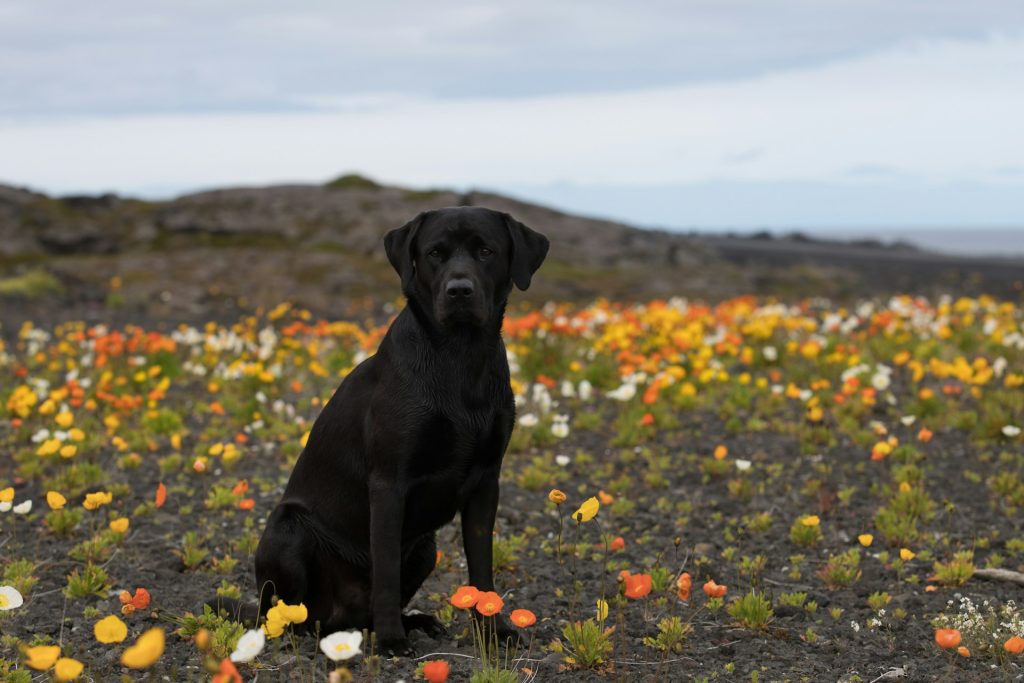
Although you might not be able to travel with your dog, learning about the Icelandic Sheepdog enriches your understanding of Iceland and its people. For a seamless and enriching travel experience, consider renting a car from Hertz Iceland, and explore the country’s stunning landscapes and cultural heritage at your own pace.
Ready to embark on an unforgettable Icelandic adventure? Visit the Hertz Iceland website to explore our car rental options and start planning your trip today!
FAQs
- Can I see Icelandic Sheepdogs during my trip?
Yes, you can see Icelandic Sheepdogs in rural areas and farms. They are also featured in events like the annual sheep roundup in September, “rettir.”
- What are the best places to visit to learn about Icelandic culture?
Consider visiting national parks, rural farms, and cultural museums to get a comprehensive view of Icelandic culture and history.
- How can I rent a car in Iceland?
Visit the Hertz Iceland website to explore rental options and book a car that suits your travel needs.




